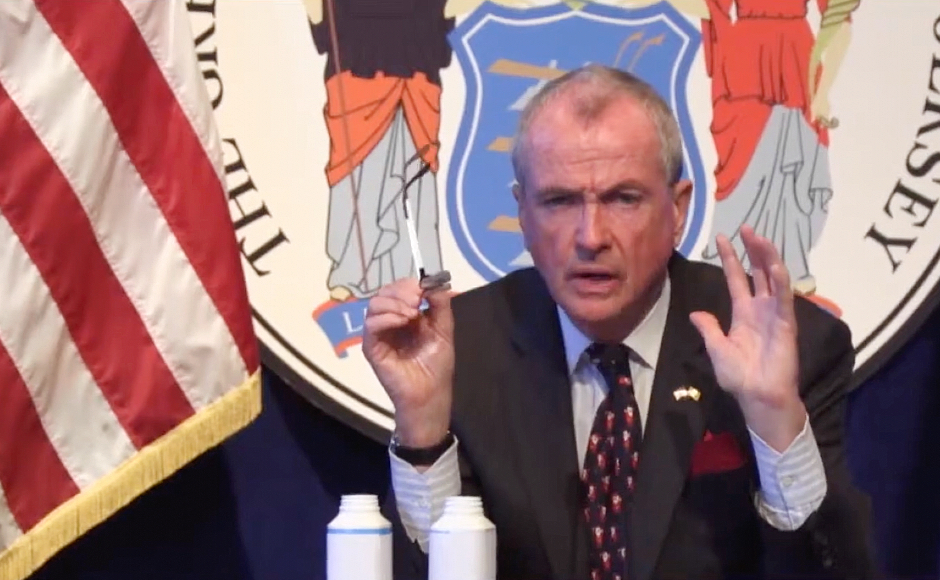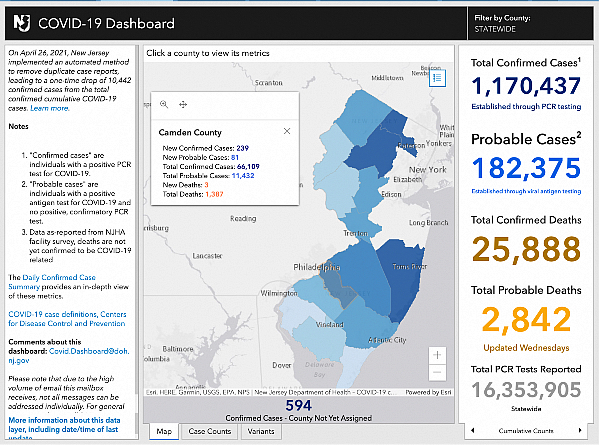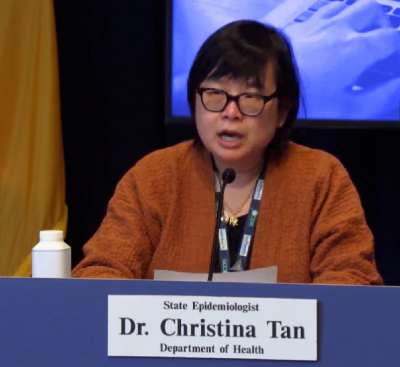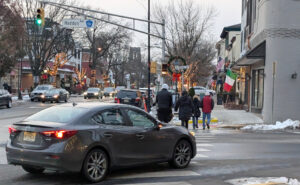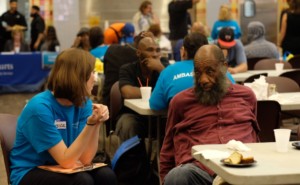Infections are back to January 2021 levels heading into the holidays, as health officials urge residents to get vaccinated and boosted before gatherings.
By Matt Skoufalos | December 20, 2021
Another 6,505 New Jersey residents have tested positive for novel coronavirus (COVID-19), bringing the statewide total to 1.17 million cases confirmed via polymerase chain reaction (PCR) testing, Governor Phil Murphy reported Monday in the final state briefing of 2021, the 94th of the year, and 238th since March 2020.
New Jersey is also reporting 744 new COVID-probable cases based on antigen tests, bringing the statewide total to 182,375 positive antigen tests.
Antigen tests have a faster turnaround time than PCR tests—sometime within 15 to 30 minutes—but are less reliable at detecting active infection of the virus, and more capable of reporting false positives.
New Jersey Health Commissioner Judy Persichilli reported that the state is seeing a surge in new cases that is “most likely” attributable to the Delta and Omicron COVID-19 variants. Persichilli urged residents to stay home if sick, get tested before holiday gatherings, and isolate at home if they test positive.
New Jersey is home to more than 100 free COVID-19 testing sites, and although Binax rapid antigen tests are in short supply, residents can receive a free at-home test kit through a state partnership with Vault Medical Services.
Sadly, 11 more residents have perished from complications related to the virus, bringing the statewide, confirmed death toll to 25,888 lives lost during the pandemic.
In addition to those lab-confirmed fatalities, the state has acknowledged another 2,842 probable COVID-19-related deaths—seven more than previously reported.
Since March 2020, 1,146 of every 100,000 New Jersey residents (more than one out of every 100) have been hospitalized with COVID-19, and 294 of every 100,000 have died from COVID-19-related complications.
More than 16.353 million polymerase chain reaction (PCR) tests for COVID-19 have been performed statewide, with a 13.31-percent positivity rate per 100,000 residents.
Rate of transmission (Rt) at 1.21, spot positivity lowest in South Jersey
The statewide average of COVID-19 spot positivity testing based on PCR test results stood at 12.11 percent December 11; in South Jersey, it was lowest, at 9.71 percent.
Rt, the variable that describes the seven-day, rolling-average, statewide rate of transmission of new COVID-19 cases, rose to 1.21 on December 20.
An Rt figure of 1.0 means that each new COVID-19 patient is infecting more than one other person, on average, and the spread of the virus is increasing.
Since its mid-April-2020 COVID-19 spike, the highest reported RT in New Jersey was 1.48, recorded August 1, 2020. Prior to artificially low, adjusted reports of 0.34 in the first week of May, the lowest in the past year was 0.62, recorded June 9, 2020. On May 21, 2021, it reached a new low, of 0.59.
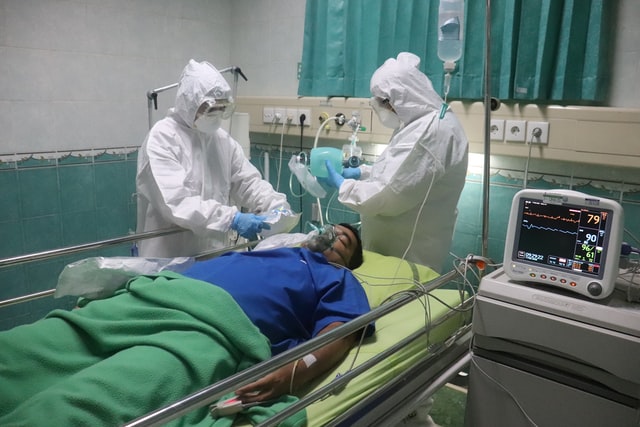
Simulated COVID-19 patient in a hospital bed. Photo by Mufid Majnun on Unsplash
COVID hospitalizations climb to levels unseen since mid-January
Throughout New Jersey, 1,902 people currently are hospitalized with a suspected (67) or confirmed (1,835) case of COVID-19, Murphy said—the most since nearly a year ago.
Among those hospitalized patients, 359 are in intensive or critical care, and 181 of the ICU and critical-care patients (50 percent) are on ventilators.
In New Jersey’s 71 critical care hospitals, 253 patients were hospitalized with COVID-19 yesterday, while 190 others were discharged.
Persichilli said that hospitals have capacity triggers, and when they hit 90 percent of their maximums, health department officials call them “to discuss their ability to handle more cases and what types of cases.”
One hospital triggered that alert in the past week, Persichilli said, which can be attributable to bed and staffing capacities, but which can also be resolved in a day’s time. She also noted that “we are seeing a lot of illnesses amongst our healthcare workforce.”
LTC update: outbreaks climb, booster uptake low
Across the state, long-term care (LTC) centers have reported 1,980 cumulative outbreaks of COVID-19, and 205 are dealing with an active outbreak. LTCs account for 58,391 infected patients and staff in New Jersey, or 4.9 percent of total cases.
That includes 34,538 residents and 23,853 staffers sickened by the virus, as well as 8,739 lab-confirmed resident and staff deaths (34 percent of the statewide confirmed total), with facilities self-reporting 145 staff deaths.
Persichilli suggested that facilities could curb those numbers by improving the number of staffers and residents who have received booster doses of the COVID-19 vaccine.
Across New Jersey, 90.8 percent of LTC residents and 86.2 percent of LTC staff have received their primary vaccination series, but just 78.4 percent of vaccinated residents and 37.8 percent of vaccinated staff have received boosters.
“Both of these numbers are too low,” Persichilli said. “The staff number is especially concerning.”
Of 641 veterans residing in three state-run homes, 456 residents have tested positive for COVID-19, and 158 have died from complications related to the virus. Three hundred veterans have recovered from the virus. No resident currently is COVID-19-positive.
The facilities at Menlo Park, Paramus, and Vineland are staffed by 1,371 workers, 10 of whom are presently COVID-19-positive. The facilities have sustained two staff deaths related to the virus.
At state-run psychiatric hospitals, 378 of 1,139 patients and 1,136 staff members have tested positive for COVID-19. Fourteen patients and eight staffers have died from complications related to the virus.
MISC and school cases up
In keeping with the general surge in new COVID-19 cases, New Jersey has seen a spike in outbreaks related to in-school transmission as well; however these remain “somewhat rare,” Murphy said, despite the 3,500 public schools in the state.
To date, 152 New Jersey children aged 1 to 18 have been diagnosed with pediatric multisystem inflammatory syndrome (MISC)—one more than previously reported. Four of those cases were reported in Camden County, tied with Cumberland and Monmouth Counties for third-least in the state.
All those pediatric patients have tested positive for an active COVID-19 infection or the presence of COVID-19 antibodies, indicating exposure to the virus. No deaths have been associated with this syndrome in New Jersey, although several children have been hospitalized during their treatment for the illness.
From August 1, 2020 through the end of the 2020-2021 school year, 293 COVID-19 outbreaks encompassing 1,385 individual cases were traced to in-school activities in all 21 New Jersey counties. In Camden County, 18 outbreaks were linked to 78 in-school cases, sixth-most in the state.
Since the start of the 2021-2022 school year, 294 reported outbreaks—three or more students or staff who contracted the virus within the school—have been logged, affecting 1,618 people, a mix of students and staff.
In Camden County, 26 COVID-19 outbreaks have accounted for the in-school infections of 206 people, which is the most of any county in the state, and more than the county had sustained in the entire prior school year.
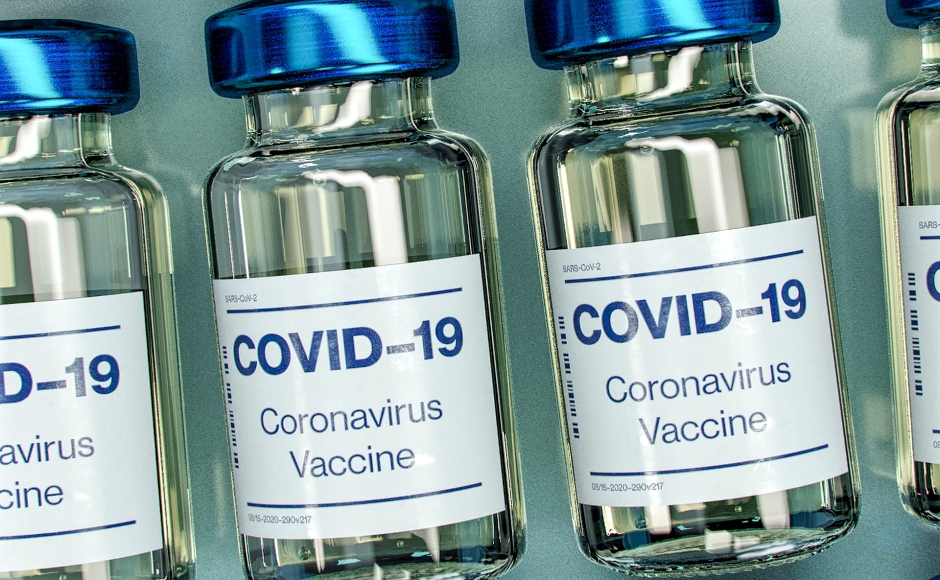
COVID-19 vaccine bottle mock-up. Photo by Daniel Schludi on Unsplash
Vaccination update: NJ clears 6.1M fully vaccinated in-state
More than 12.811 million COVID-19 doses have been administered in New Jersey, with 6.148 million people have been fully vaccinated in-state, having received either a one-shot formulation from Johnson and Johnson or both doses of the two-shot Pfizer or Moderna vaccines.
The most pressing task for public health officials remains improving uptake of booster doses among those who are eligible. Thus far, only slightly more than 40 percent of those who’ve received a COVID-19 vaccination have gotten boosted.
“If you are six months out from Pfizer and Moderna, or two months out from J&J, give yourself that protection,” Murphy urged, adding that the booster dose affords people “great strength against COVID-related hospitalizations and deaths.”
In Camden County, 679,609 doses have been administered, seventh-most in the state; 377,113 people have been fully vaccinated.
An estimated 498,606 vaccine doses have been administered to New Jersey residents outside of the state, of which 206,917 residents are estimated to have been fully vaccinated.
The first vaccines in the state were administered December 15, 2020; by February 8—55 days later—New Jersey had immunized its millionth resident. Twenty days thereafter, that count hit 2 million, and 3 million within two more weeks.
On March 29, New Jersey crossed the 4-million-dose threshold, and the state cleared 5 million doses over the weekend of April 10, 2021. Eight days after that, New Jersey hit the 6-million-dose mark. By May 3, 2021, the state had cleared 7 million doses administered, and two weeks later, it had surpassed 8 million doses.
As of June 2, 2021, the state had cleared 9 million administered doses and 4 million fully vaccinated New Jerseyans, and on June 18, hit 4.7 million vaccinated individuals, its target goal for 70 percent of the adult population of the state.
By mid-July, that number had increased to 5.019 people fully vaccinated at New Jersey vaccination sites. At the end of August 2021, the state had exceeded 11 million doses administered and had begun approaching 6 million fully vaccinated residents.
It took until mid-October 2021 to clear the 12-millionth vaccine dose administered, at a time when some residents have begun receiving booster doses or third doses. By late October, New Jersey finally reached an estimated 6 million fully immunized residents, nearly three months after having crossed the 5-million-resident threshold.
Omicron cases on the rise
The COVID-19 variant B.1.1.529 “Omicron” is increasing locally and nationally, state epidemiologist Dr. Christina Tan said Monday.
As of the week ending December 4, less than 1 percent of variants sequenced in New Jersey were of Omicron variants, “but there is a lag to this” data reporting, Tan said.
Presumptive genetic sequencing results from the state laboratory in Hackensack suggested that Omicron could account for as much as 13 percent of cases processed there, Tan said.
“From a national perspective, our region is at 10 percent; nationally, it’s at 3 percent and increasing,” she said. “Data from Europe does suggest that the doubling time and rate of increase of Omicron is definitely way steeper than Delta.”
Officials also pointed out that the Delta variant (B.1.617.2) is still the leading variant among cases in the state.


